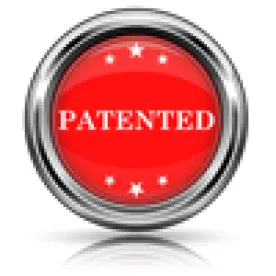Cambridge Assocs., LLC v. Capital Dynamics; PNC Bank et al. v. Secure Axcess
Addressing the issue of patent-eligible subject matter for covered business method (CBM) patents, the U.S. Patent and Trademark Office Patent Trial and Appeal Board (PTAB) instituted a CBM review on § 101 grounds in Cambridge Assocs., LLC v. Capital Dynamics, CBM2014-00079 (PTAB, Sept. 8, 2014) (Praiss, APJ) but declined to institute a § 101 basic review in PNC Bank et al. v. Secure Axcess, LLC, CBM2014-00100 (PTAB, Sept. 9, 2014) (Benoit, APJ). In Cambridge Assocs., the PTAB preliminarily concluded that the claimed method for benchmarking assets was directed to an abstract idea, whereas the PTAB did not find an abstract idea in the claimed method for authenticating a web page in PNC Bank.
Cambridge Associates petitioned for a CBM review after it was sued for infringement of a patent directed to a method for analyzing the performance of financial products with irregular cash flows by applying a scaling function. Cambridge asserted that the patent was directed to ineligible subject matter and that the challenged claims were obvious in view of various combinations of three prior art references.
After concluding that the challenged patent presented subject matter standing for a CBM review, i.e., because the patent addressed the non-technical financial problem of comparing equity returns, the PTAB turned to whether the claimed subject matter was patent eligible. The PTAB concluded that the claims were likely unpatentable because they could be performed by a human without a computer, or with a pencil-and-paper analysis, and the reference to a computer amounted to nothing more than an instruction to implement the abstract idea on a computer. The patent owner argued that the claims do not completely cover the abstract idea because alternative methods of benchmarking are available, but the PTAB found the argument unpersuasive, noting that the steps used in the claimed method were conventional.
Similarly, PNC Bank petitioned for a CBM review after it was sued for infringement of a patent directed to a method for authenticating a website by adding an authenticity stamp. PNC asserted that the challenged claims were directed to ineligible subject matter, were obvious and were not supported by sufficient written description.
In this case, the patent owner argued that CBM standing was lacking because the claims were applicable generally, not just to financial websites, and lacked any financial or monetary claim terms. The PTAB disagreed and pointed to the specification’s disclosure of financial institutions’ particular need for the claimed solution, and noted that the patent had been asserted in various lawsuits against financial institutions.
On the merits, the PTAB concluded that the claims were not directed to an abstract idea but rather were directed to transforming data in a particular manner. PNC argued that the claims merely computerized the “centuries old practice” of placing a trusted stamp or seal on a document to indicate authenticity, but the PTAB countered that the claims call for a web page rather than a paper document. The PTAB also rejected PNC’s argument that the claims covered nothing more than manipulating and collecting data, and responded that the claims could not be performed entirely in the human mind and instead required a change in the data itself.
While the CBM review in Cambridge Assocs. will proceed on the basis of institution, ineligible subject matter, the PTAB declined to go forward on obviousness. In PNC Bank, the PTAB did institute a CBM review as to obviousness, but declined to proceed on insufficient written description.




 />i
/>i

